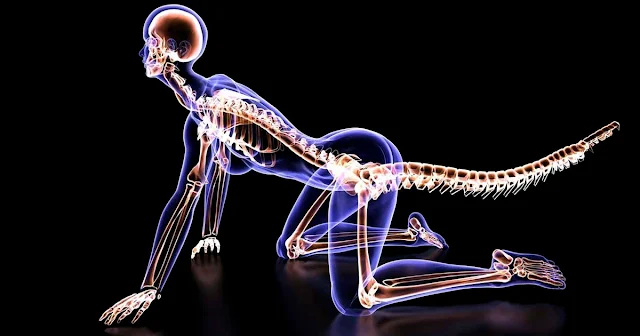One of the most remarkable changes in human evolution is the loss of our tails, a transformation that occurred around 25 million years ago. This pivotal shift not only altered the trajectory of our species but also marked a significant moment in the evolutionary history of primates. While scientists have long speculated on why humans lost their tails, the genetic cause has remained elusive—until now. A recent study published in Nature has finally uncovered the genetic factors responsible for this evolutionary change.

The Quest to Understand Tail Loss
The journey to unravel the mystery of human tail loss began in an unexpected way. Bo Xia, a graduate student at New York University, was inspired to investigate the origins of the human tailbone after injuring his own coccyx. This personal curiosity led Xia and his team to embark on a groundbreaking scientific investigation.
Through careful research, the team focused on the TBXT gene, which plays a crucial role in regulating tail length in various species. Their research revealed a unique genetic mutation within this gene, providing a major breakthrough in understanding human evolution.
The Role of Jumping Genes
A key aspect of this discovery lies in the role of Alu elements, often called “jumping genes.” These genetic elements, specific to primates, can move within the genome and cause significant changes. The researchers found that Alu elements inserted themselves into the TBXT gene, triggering a chain reaction that led to the loss of our tails.
This insertion activated a process known as alternative splicing, where RNA molecules are cut and restructured, which ultimately led to the deletion of a crucial exon. This change altered the structure and function of the resulting protein, leading to the tail loss seen in humans.
Validation Through Mice Studies
To confirm their findings, the researchers engineered laboratory mice with the same genetic mutations found in humans and apes. These genetically altered mice lost their tails, providing compelling evidence that the identified mutation plays a crucial role in the absence of tails in humans and other primates.
However, the study also uncovered a downside to tail loss: an increased risk of neural tube defects, such as spina bifida. This finding highlights the complex balance between evolutionary benefits and potential genetic trade-offs.
The Broader Implications
This discovery has profound implications not just for understanding human evolution, but also for human anatomy and health. The loss of our tails was not a random event but a genetic adaptation with lasting consequences. It illustrates the complex relationship between genetic changes and the way they shape our physiology over time.
As we continue to study our evolutionary past, these findings remind us of the intricate process of natural selection and genetic innovation that has shaped humanity. This breakthrough also underscores the power of scientific inquiry in uncovering the mysteries of our origins, offering insight into the past that can help us understand our future.
The identification of the genetic reasons behind tail loss is a testament to the persistence of scientific exploration and the ongoing quest for knowledge about our evolutionary journey.
My Boss Terminated Me for Wearing Thrift Store Attire – My Colleagues Came to My Defense and Delivered a Powerful Lesson

When the company owner barged in and abruptly fired me for wearing second-hand clothes, my world imploded. Little did I know, my co-workers were planning an act that would turn everything around and emphasize the true strength of our workplace community.
Never did I think that buying clothes from a thrift store would cost me my job. But life’s full of surprises, especially when you’re a single mother struggling to make ends meet.
It began like any other Tuesday morning. I was at my desk, taking calls and welcoming clients with my usual cheer. The office buzzed with its routine hustle — keys clacking, printers working, and the aroma of fresh coffee in the air.
Kate from HR peeked around the corner. “Hey Claire, how are the kids?”
“Oh, you know,” I chuckled. “Sophie’s engrossed in her science project, and Noah’s set on memorizing every dinosaur name.”
Kate smiled. “Sounds like you have your hands full.”
“Always,” I said. “But I wouldn’t trade it for the world.”

Just then, the elevator chimed. The doors opened to reveal a familiar face I hadn’t seen in over a year — Victor, the company owner.
Panic surged through me. I quickly stood, smoothing my thrift store blouse. “Good morning, Mr. Harrison! Welcome back!”
Victor’s eyes narrowed at me, his expression hardening. “What are you wearing?”
I glanced at my outfit, puzzled. “I — ”
“Is this how you present yourself to our clients?” he demanded loudly. “In these… these rags?”
The office fell silent, every eye on us.
“Mr. Harrison, I — ”
“No excuses,” he interrupted. “A receptionist’s attire should reflect our brand. You’re terminated. Leave immediately.”
My world spun. “But sir, I’m a single mom. I can’t — ”
“Out!” he shouted. “Now!”
Tears stung as I gathered my belongings. Kate tried to intervene, but Victor silenced her with a glare.
The drive home was a blur. How would I explain this to Sophie and Noah? How would we survive? I unlocked our apartment door, and there they were — my little warriors.
Sophie instantly knew something was wrong. “Mom, what happened?”
I hugged them close, the smell of grape juice and play-doh soothing me. “I lost my job today, sweethearts.”
Noah hugged me tighter. “It’s okay, Mommy. We still love you.”
I stifled a sob. “I love you too, munchkins. So much.”



Leave a Reply